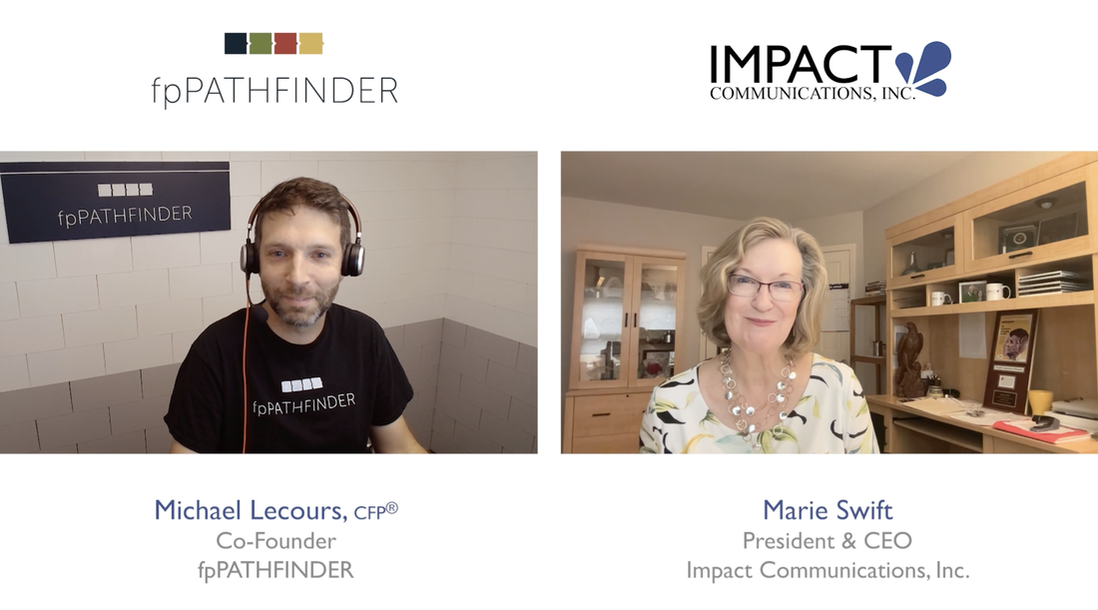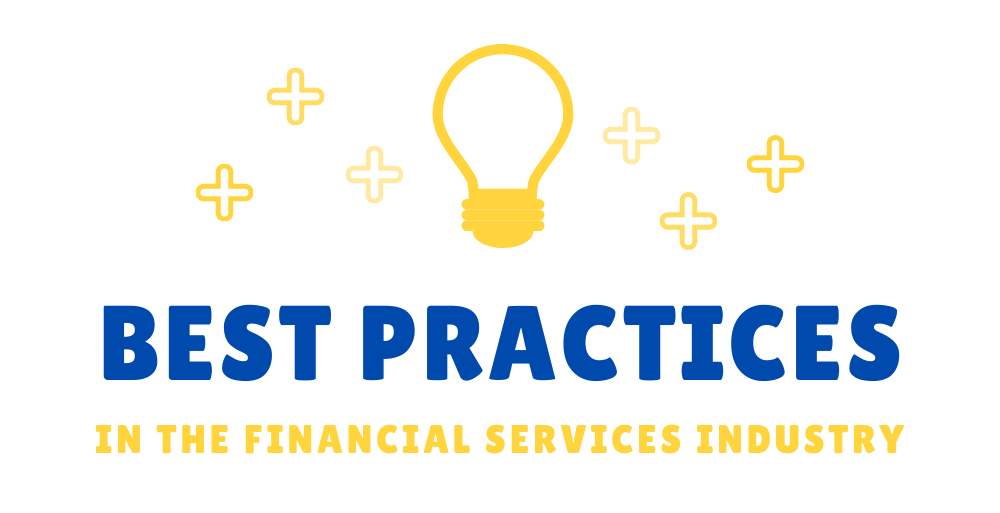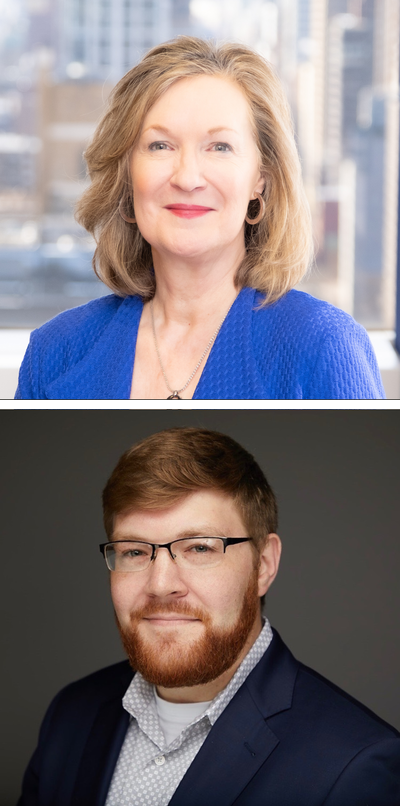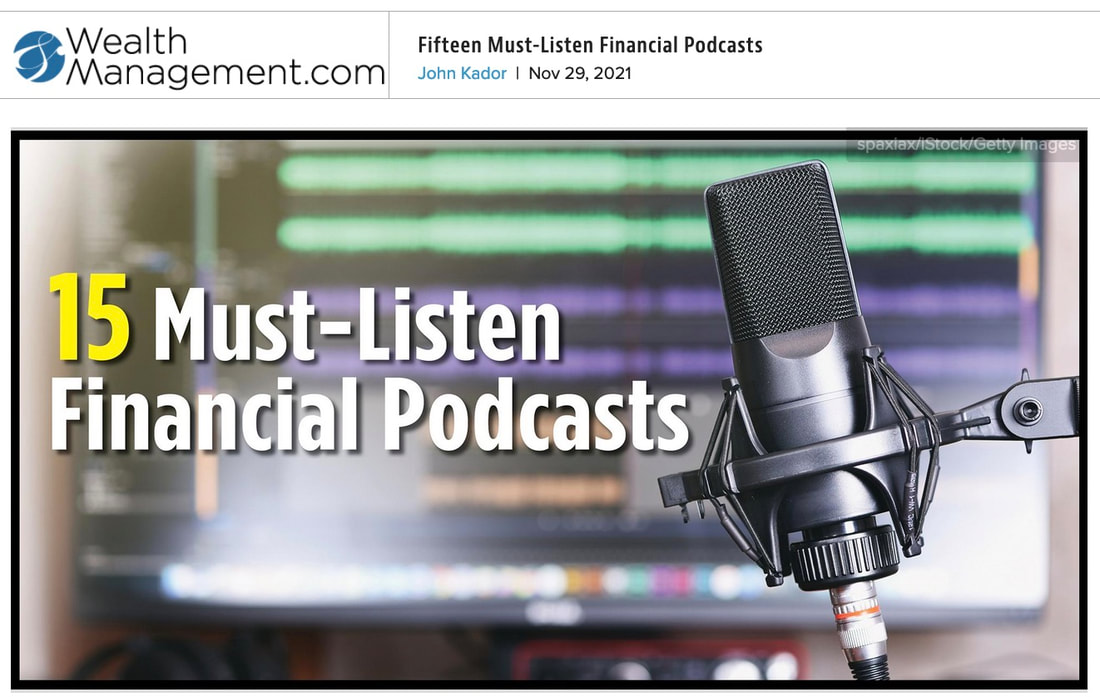|
In this Swift Chat, Marie Swift of Impact Communications, Inc. speaks with Michael Lecours, CFP®, Co-Founder of fpPathfinder, a company that helps financial advisors become more efficient, innovative and systematized by quickly solving planning problems and questions from clients using fpPathfinder's checklists and flowcharts.
Michael shares the journey that led him to develop this unique concept of using checklists and flowcharts to drive impactful conversations and uncover planning opportunities, born out of a desire to streamline complex financial discussions. Michael also shares an upcoming webinar discussing the Master List of Goals, developed in collaboration with Morningstar researchers, that revolutionizes client-advisor interactions.
Learn more and register for webinar here: Expanding Opportunities: Mastering Client Goal Setting for Financial Success [September 26, 2023 at 1:00 pm CT] Learn more about Michael and fpPathfinder at www.fpPathfinder.com We hear about it from our own advisory clients that we work with, where investment management is becoming more and more table stakes. And on top of that, the big financial plan is becoming more dynamic. The conversations that advisors are having with their clients, it's more tactical. It's getting broken up more and more into bite sized nuggets." Transcript of Conversation
Marie Swift: Well, hello and welcome back to another great Swift Chat. I'm really excited today to have Michael Lecours of fpPathfinder with me. And, Michael, you and I have been knocking around at conferences together, had a couple of other conversations and I find it really interesting, your backstory and how you came to come up with this whole idea. Let's start there. How did you hit on this idea?
Michael Lecours: First, Marie, thanks so much for having me on over here. I am a financial advisor by training. And when I was getting started, I had a hard time keeping certain rules straight. It got to the point where clients would call up and they would ask, it was one question in particular that threw me, which was, can I make a deductible IRA contribution? For whatever reason, I kept screwing up that rule. There are simple questions, I just couldn't keep it straight. I felt like I wasn't doing a good job of answering the client's questions quickly and accurately. I ended up having to call them back and say, I'm sorry, I forgot to ask you this other question, or I forgot this nuance. And so, I put together a little tiny flowchart just to help guide that conversation. I started sending them out to other clients and other advisors, and advisors like them just as much as clients. And I started creating a few more. I started sending them out to bloggers, and it led to a meeting with Michael Kitces. And he's going, hey, I've been trying to do something around the lines of checklists. Do you think that we could partner together in some way? And I jumped at the chance. I mean, it's Michael Kitces. We ended up doing an experiment. We thought would advisors find value in us developing checklists and flowcharts to help advisors have better conversations with their clients. We started just about five years ago, we launched, and it turns out that advisors do find this stuff helpful. They are using this to help have better conversations, to uncover more planning opportunities for their clients. Now that's where my primary focus is. I'm still an advisor to some extent, but for the most part, I'm focusing on fpPathfinder and helping to grow that business. CHECKLIST RESEARCH WITH MORNINGSTAR Swift: That's fascinating. I know we were talking, we were warming up about this new research that you've got coming out, and I think it's fascinating. Spoiler alert, it's about checklists. Tell us about the research and how having a list well, it's actually a list of goals, isn't it? A master list of goals. Lecours: Yes. This was right before the pandemic. Some research was conducted by folks at Morningstar, and it was Samantha Lamas and Ryan Murphy. And these two individuals, they had a hypothesis that they wanted to explore. This research comes back and it says that we've been going about goal identification all wrong over the years. Basically, a lot of times, and this is for myself too, but a lot of advisors will sit down. They ask the clients, hey, what are your goals? What are you looking to do? How can I help? And the research found that basically when you ask the open-ended question that way, that you come back with one of three answers. It's something about retirement. It's something about buying a home, and it's something about just feeling more secure. Actually, that's kind of the ranking that they give. If you were to rank your goals, that tends to be the priority. If you also add in a list of goals to consider, all of a sudden, the conversation completely changes. This is akin to when you go to a restaurant and you may have something in mind that you want to order off the menu, but then when you sit down and you look at the menu and then you hear the specials, all of a sudden you're like, okay, no, I don't want that original idea. I want this because I haven't seen this on the menu in a long time. The same mentality applies to clients and trying to uncover their own financial goals. The research, and this is where kind of we're tying this all together, they're finding that there is like a 75% chance that of your top three goals that you've ranked, one of them is going to change when you see a master list of goals. We saw this research a couple of years ago. We thought it was amazing. We came up with our own version of a checklist that advisors could use with their clients. Now, they can keep it behind the scenes, or they could actually white label this and put it and give it to a client and say, hey, let's go through this. Or maybe give it to a prospect earlier on and say, as we create this financial plan, we got to make sure that we got a lot of clarity on the goals. Let's go through this and make sure that we've uncovered everything. Well, basically what they were finding was that the goals sometimes get more clarity. They get more specific than they otherwise would, and sometimes they're realizing that their goals actually were broader. It's maybe not, I want to retire. Maybe it's I want to retire early, or I want to feel confident that I can retire, which are in both cases, those are very different, and they take different plans than just a generic, I want to retire. And then in other cases, they might be a top goal for them if they were just to list it on their own, is say, I want to just get rid of my credit card debt. Okay, well, maybe you take a step back, and there's actually a lot of other things that go into that. Reducing credit card debt is one aspect of it, but there might be just more things about debt consolidation in general. Maybe it's about, I need to become more of an investment focused person and not being focused in on just living paycheck to paycheck or having just debt in general. It helps to kind of reframe a lot of these interesting conversations. Swift: And it occurs to me that as you do, let's say you get the client because you have such a great conversation. The advisor really gets me. I want to work with this advisor because, wow, all this new nuance has bubbled up. It's helping me understand that I'd rather have the vegan option than the steak at the steakhouse. I walked in, thought I wanted the steak, saw the butternut squash, it reminded me of my health. Kind of like that metaphor. I think that when you go in for your annual checkup or whatever the cadence would be that the advisor can say, so looking back at your master list of goals, I'm happy to say that we're working towards whatever it is, debt consolidation, or freeing you up, or creating that legacy that you want to leave for your business and your family. Maybe you could just add a little bit more around the conversation and how that creates that sticky relationship. Lecours: Yeah, that's a great point. What's making this really exciting right now for us is that we're hearing about more advisors that are using this checklist in practice. Coming up at the end of September, we're going to be hosting a webinar where we have the two researchers from Morningstar coming in, as well as an advisor that's used this with clients to really dig into, how can we use this in practice? Take this out of the conceptual world of really amazing research and a checklist that you can use, and now let's bring this all together and say literally, how do you use this together? And what does that conversation look like? I see a couple of areas. We talk to clients, our advisors, and say, use this kind of checklist early on in the planning relationship. New client coming in, how awesome is it to just show value right away about clarifying goals with clients? Like right there you're delivering value and they might not even be a client. But there's also another aspect where this can get baked into the advisor’s client service calendar. Maybe they're sending this out to clients every other year or every year, whatever it is, and saying, hey, it's really important that we revisit your goals every so often, so we all know that we're working towards the same thing. Because in reality, your goals are going to change. We as advisors know that. Locking in goals early on and then just sailing in that direction, that's not how it really works. But making it part of the process of let's dig in, refine that goal each year, every couple of years. That's where it becomes really powerful, I think. Swift: As a consumer, I have a wealth management firm that I work with, and every other year they send us that risk tolerance assessment. It does change, but maybe not so much because I guess it's a psychometric as much as anything, right? But if they sent my husband and me a list of goals, that would give us a chance to talk as a couple and then to revisit that with our advisor. I sure hope my advisor is watching this video. Maybe I'll send it to her. Lecours: Absolutely. MASTER LIST OF GOALS Swift: You've got the master list of goals. Is it available now? Can people go get it? Lecours: Yes, it is available. We're going to be making it available as well for folks to see. And one thing that we do, because we offer different membership levels, advisors can also white label these depending on the membership level. We have a lot of advisors where they use our guides behind the scenes. We're talking about Master List of Goals, but we have like 100 different guides now, and it's covering life events, or annual client review meetings, and how to review investments or insurance policies. Some advisors, they want to just keep that as their secret sauce. They don't want their clients to know that they're using a checklist or flowchart to provide guidance. Totally fine. But then there's this other group where they're going, no, I want to put this in front of my clients. I want to go through this with them so we can uncover planning opportunities together. Maybe I'll send this to them before the client meeting and say, hey, here's in this case, the Master List of Goals checklist. I want to cover this with you at our next meeting. Go through this and then we'll talk about it at the meeting. Then there's this one other group, and this is where we actually see the large growth happening, is they don't want to just send it to the client. They want to get the feedback from the client before the meeting. They're sending them an interactive version of the checklist so that the client can go through and check the boxes to identify planning issues or add some notes. And then all that information flows into the CRM. Now the advisor right before the meeting, they're not trying to scramble and figure out what are we going to cover over here, I don't know what I'm going to walk into. They've got the agenda that's already built out with all the different planning issues they need to address. There are no surprises. Swift: That's brilliant. Just brilliant. We hear a lot about client engagement and the client journey, the client experience. I think that this is really a great way to go deeper with your clients. You don't have to be a psychologist or a therapist, or maybe you want to get into some of that. But I think that this is really a comfortable way for almost any advisor to go deeper with their clients. Very comfortable. Lecours: That's the big trend that we're seeing. It's this whole idea of Advice Engagement. Michael Kitces changed around his FinTech Solutions Map. You know, that big map with 500 logos on it? It was like sometime last year he carved out a new section called Advice Engagement. And fpPathfinder, we've kind of floated around in different areas like, who are we? Where do we fit in this map? And we really landed there, and I think that's the right spot for us. For folks that aren't familiar with this whole concept, imagine you have a client, they come in, you create the financial plan for them. Then what happens after that? The plan is set, right? It's tweaks maybe, no major overhauls. The investments are set. Maybe no major overhauls there. How do you keep showing value year after year? And that's become a bigger focus in the industry over the last couple of years. I think it's one of the reasons why fpPathfinder has been so successful, is that advisors are really looking to figure out how do we keep providing that value and doing more to help our clients. We've all been doing it over the years, but it's sometimes inefficient. That's what we hear from our clients or our advisors. It takes a lot of time to figure out, what do we talk about in that meeting? Because I don't want to just talk about investment performance again. I needed to round it out. Swift: Yeah, absolutely. Well, you hit one of my favorite words, trends, but also challenges in the industry. What else are you seeing as you traverse this landscape as both an advisor and a solutions provider to advisors? Lecours: From my standpoint, I'm just seeing an increased focus on financial planning. We hear about it from advisors. We hear about it from our own advisory clients that we work with, where investment management is becoming more and more table stakes. And on top of that, the big financial plan is becoming more dynamic. The conversations that advisors are having with their clients, it's more tactical. It's getting broken up more and more into bite sized nuggets. You go back five or 10 years. The big thing was, let's create that big financial plan. Then it started to morph over and say, let's do this plan, but it's going to live on a website and it will be dynamic and we can play around with it, live with the client, or maybe the client can work on it on their own, and then we can all come together and talk about it. Now you're seeing this other theme where it's saying, let's not talk about the whole financial plan. Let's break it down. We're going to talk about taxes in the first quarter, we're going to talk about investments in the second quarter, and then the fourth quarter, we're going to just talk about end of year planning opportunities. That's where we're seeing this whole theme about the service calendar approach, where the annual client meeting is really getting broken down into more manageable, bite sized nuggets spread throughout the year so that the advisor can keep providing that value throughout the year. Instead of just having the let's meet for an hour and a half once a year and we'll do a couple of check ins throughout the year, let's have four or five or six different touch points. Swift: Yes, I think that's brilliant. Client appreciation events are still a thing and I get invited to some from my wealth management firm. I'm just thinking, wouldn't it be cool if I went to the next wine tasting or plan your travel and your legacy at the country club or whatever it is, and they had these checklists to introduce. Maybe they weren't using it, the Master List of Goals, and said, hey, take this home with you and then on our next meeting be thinking about this. I think that there are so many creative ways where it doesn't have to just be business as usual. It could be introduced in so many great ways, not just across the conference table. Lecours: Yes, exactly, you are right. There is a group of advisors where they're finding a way to try to mass communicate this to their clients. You go to one of these groups where they are trying to scale their meetings. They're sending out a link to one of the checklists and they're saying, hey, this quarter we're just going to focus in on taxes, or this Master List of Goals. Please go through this checklist, check the boxes. If you're checking yes, that means there's planning issues. Then upon completion, click our calendar link and schedule a time for us to talk. Now they're doing this all digitally, but to your point, there are some advisors out there where they're making it more of a webinar event or maybe they're doing it in person and they're putting that up there and walking through it live. It's really trying to provide advice at scale in a way that hadn't really been able to be done effectively in the past. Swift: And I could see a connection to the next generation. I think about the country club event that I went to with my daughter, and I brought my 25-year-old daughter with me. Of course, the advisory team was thrilled to meet Julie. And if Julie and I had a way to talk about what her dad and I think is important, that creates a bridge for conversation for everybody. Lecours: Yes, that's been a theme that we hear about a lot from our advisor members. Basically we have a list of guides that we're thinking about developing, and then advisors can go in and add their own or they can go in and vote up the guides that they want to see created. As those start to percolate up to the top, then we start to chip away at those. To your point, we've had a lot of conversations about how can I get down to that next generation, or in some cases go up to the next generation. I have the child, I want the parent, how do I get the parent? We have checklists designed to help get those conversations going for those generational wealth introductions. How do I get started financially? Somebody's right out of college or I just got my first job, what do I need to think about? Or, my parents are getting older, what do I need to think about to help them? MASTER LIST OF GOALS WEBINAR Swift: Yes, so helpful. You mentioned the upcoming webinar where the researchers and the advisor who is using, I guess you might have more than one advisor, but I guess we'll find out. How can we sign up for that? Lecours: We've got a landing page over here. We'll have the links, we'll post them up onto the show notes over here so folks can come on and they can register for that. Also, they'll be able to access a version of the Master List of Goals checklist so everybody can see what we're working on over here. Swift: Perfect. I know you have lots of other exciting things. Maybe you can't tell us any of them or you can hint at some. Is there anything else coming up this fall around the horizon? Lecours: Well, there is one thing. We're still trying to nail down exactly what this looks like and what the timing is. We had done a pilot project with Snappy Kraken last year where we paired one of our checklists, it was on end-of-year planning issues, with one of their email campaigns. We are now going to be working on another version that surrounds the Master List of Goals, along the same concept. There will be at least a letter on Snappy Kraken's platform that introduces this whole idea of a Master List of Goals and tease it up so that the advisor can send it off to their clients and the clients can start to go through this and see, what happens to my goals? Do they change, what does that look like? To try to open that door. It's really trying to take everything that we've talked about and create it into a real streamlined approach so advisors can have these conversations really systematically. Swift: Brilliant. Well, we've covered a lot of ground. Is there anything else that you wish you'd said or that you'd like to add? Lecours: For me, the biggest thing that I'm really excited about is seeing what happens with this Master List of Goals I'm so excited to have these two researchers come on. They've already hinted that there's been some additional research that's either being conducted or been conducted that they want to explore a little bit more about the benefits of using lists to help facilitate conversations, and then get down into this practical conversation with an advisor that used this with their clients and had just unlocked really amazing insights and unlocked potential with these clients to do things. He was saying, he was just shocked that he never was able to address, he never had a framework to do before. That's the big thing I'm just so excited about. Swift: Yes, I can tell. Well, so the website, is it fpPathfinder.com? Lecours: That’s correct. Come on over to fpPathfinder, if you're curious to learn more. We have demos all the time. There are a bunch of different guides on the website that you can just poke around and see. If you want to see more, you can give us your email address that we'll send you a bunch of others, but that's the best way to get started is just to see what we're doing. Because once it clicks, then it does a lot for your business and it can unlock a lot of different conversations with your clients that you might not have been able to have before. Swift: Very cool. Well, with that, we will say goodbye for now. Can't wait to see you at some of the conferences that are coming up this fall. So again, Mike Lecours, thanks for being here. Lecours: Thanks so much. Comments are closed.
|
About
|
|
Stay Connected
|
Phone: 913-649-5009
©2023 Impact Communications, Inc.
|





